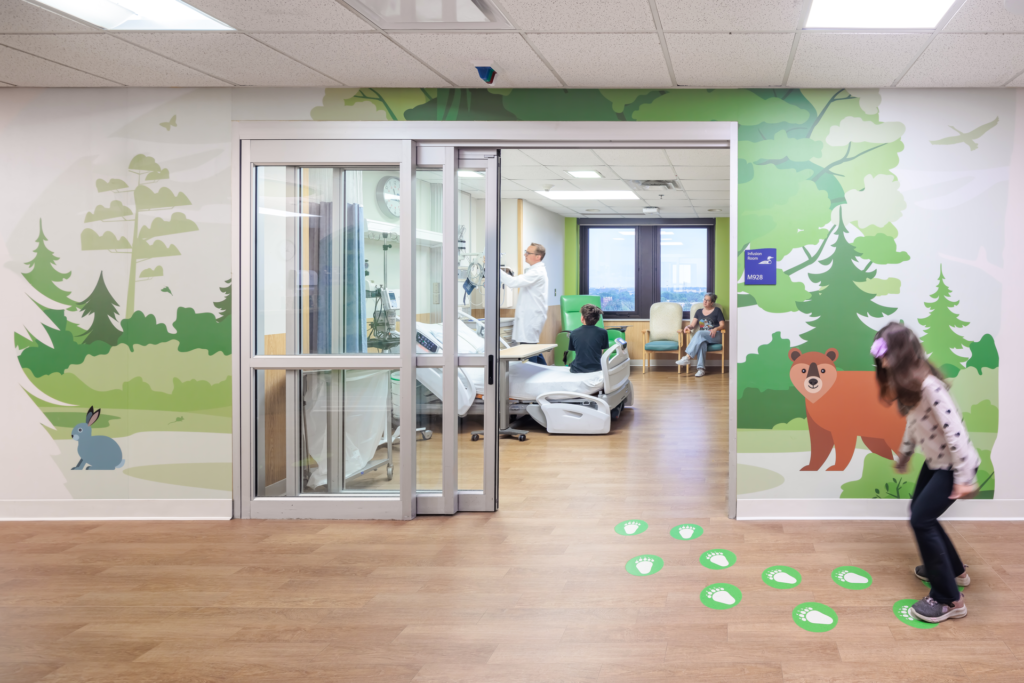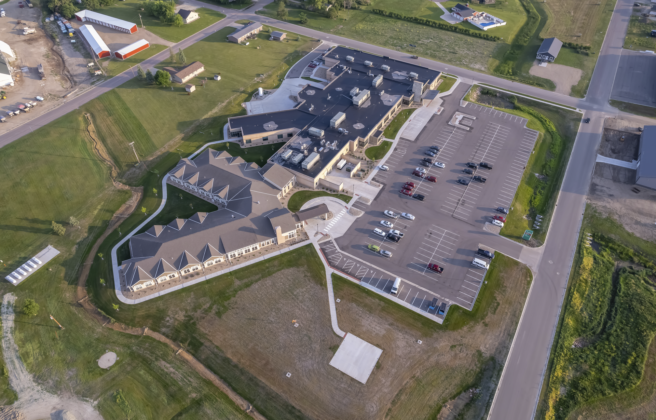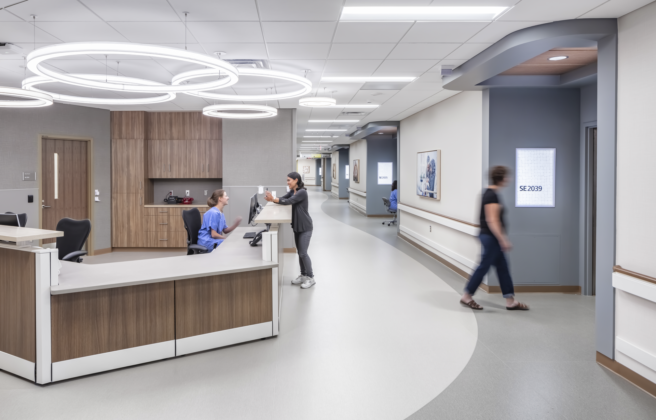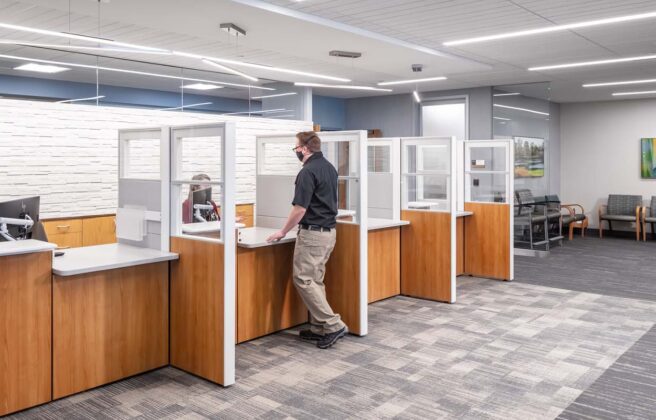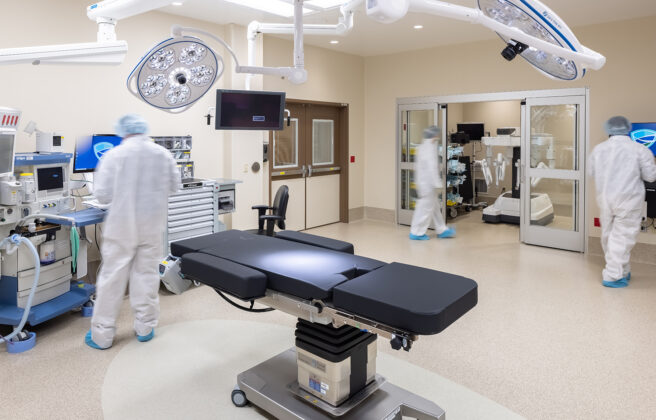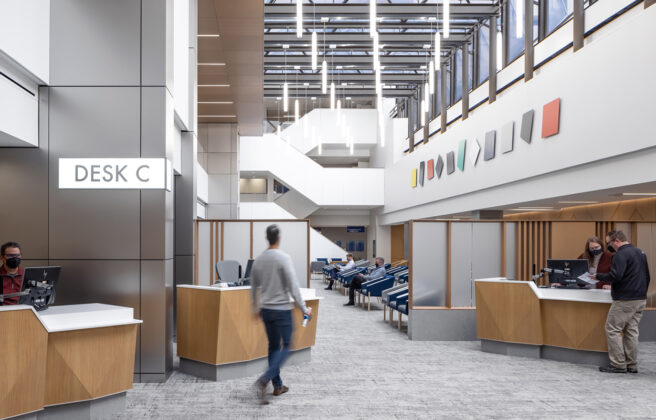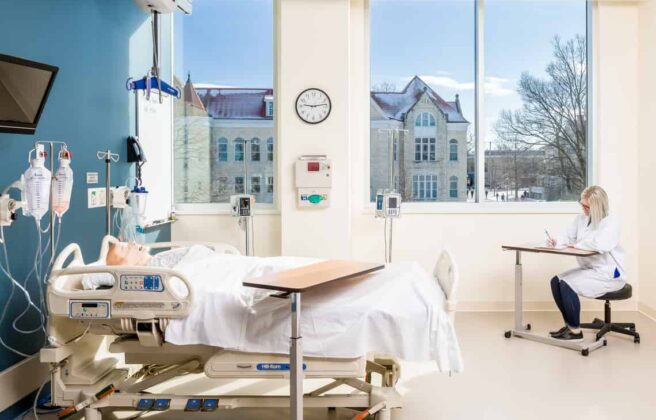Healthcare clinics are essential spaces, not only for routine wellness, but also to provide vital specialty services like urgent care, diagnostics, women’s health, and so many more. Outpatient facilities are critical to maintaining health and wellbeing, and they deserve great design to support their patients and staff.
Good clinic design revolutionizes the healthcare experience – it makes wayfinding simple, relieves stress, and improves both comfort and accessibility.
Laying it Out
Traditional clinics tend to follow the familiar model of double-loaded exam corridors with nurse stations in the front and support spaces and provider offices in the rear. However, this is not the only layout option for outpatient facilities, and not necessarily the best fit for every healthcare team. Patient demographics, clinic specialties, and preferred care models all play a role in space planning.
Some clinics are planned with clusters of 6-12 exam rooms utilizing a centralized nurse station in each pod, while others feature exam rooms surrounding a staff core. In this model, exam rooms have separate access doors for patients and staff, providing an added layer of security for doctors and nurses. The staff core model can also improve through-put by separating the flow of both patient and staff movement in hallways and is a good fit for clinics that use self-rooming.
No matter what layout best suits a clinic’s providers and patients, the importance of convenient flow for users remains the same. Our healthcare designers dig deep into each team’s operations and workflow, finding solutions that help make providers’ jobs easier and patient visits seamless.
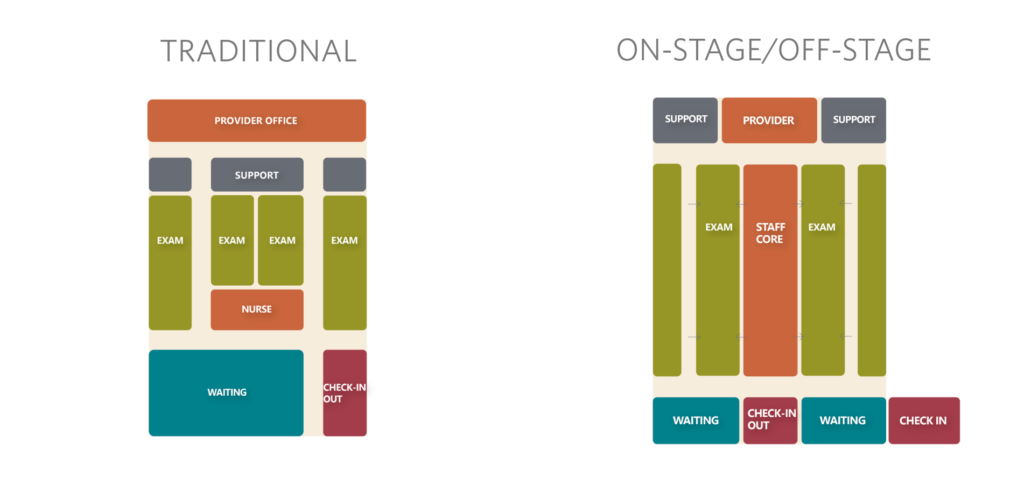
Two common clinic models
Navigation Made Easy
Intuitive wayfinding is a necessity in every space, but all the more important in healthcare environments where patients may come in feeling stressed or unwell. We believe that clinic design should alleviate stress, supporting the work that providers do by helping patients feel calm and at-ease. Confusing layouts and unclear signage can make it difficult for users of the space to find their way around a clinic, contributing to feelings of anxiety.
Whether a project is a renovation or new build, healthcare planners identify design inefficiencies that make navigation challenging, using creative, custom solutions to solve them. Our graphic design team works closely with clients and BWBR designers to create signage that not only makes wayfinding simple but is tailored to pair with selected finishes and enhance the overall environment. Imagery, textures, and colors all play a role in differentiating areas of a clinic from one another, with layered elements that make each space memorable and identifiable.
Privacy Matters
Privacy is another factor that plays a huge role in distinguishing a positive care experience from a negative one by increasing comfort and minimizing anxiety. Patient privacy should be considered in all aspects of design, from the check-in desk and waiting area to corridors and exam rooms. Healthcare is deeply personal, and thoughtful design brings peace of mind to patients and their families.
Utilizing partitions in reception and waiting spaces is one way that BWBR designers increase comfort for patients from the moment they step into a clinic, as well as utilizing design elements that encourage those queuing to stand at an appropriate distance. In exam rooms, sound-masking systems and special attention to both construction methods and materials are paramount to eliminating room-to-room transmission, preserving confidentiality and creating a space where patients feel safe to share openly with providers. This goes hand-in-hand with design elements like curtains, solid panel doors, and integral blinds on windows. Creating a clinic that maximizes privacy requires a layered approach that is present throughout the entire facility, with close attention to each element that can further enhance feelings of safety and security.
Inclusion for All
Everyone deserves access to healthcare that prioritizes their needs, and inclusive design supports people of all abilities, ages, cultures, and sizes in receiving care that works for them.
From large exam rooms with flexible furniture that accommodate families and patients of size, to signage translated in multiple languages, seemingly small considerations can make a big difference in increasing the accessibility of care. Even location plays a part in inclusivity, and BWBR’s healthcare planners can help select sites near public transit or walking paths, expanding the range of folks who can reach a clinic with a variety of transportation methods available.
Critical Care
In the evolving world of healthcare design, the details are critical, and our experienced team plans clinics where every element is strategically considered to enhance safety and comfort and elevate the standard of care. Through thoughtful considerations that support patient wellbeing and seamless operations, clinics can effectively meet the diverse needs of users and support staff in providing high-quality, compassionate care.


